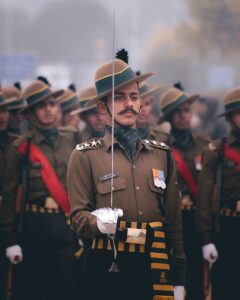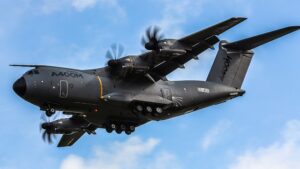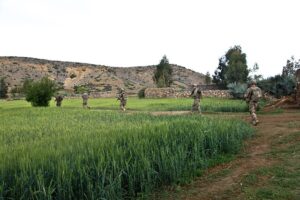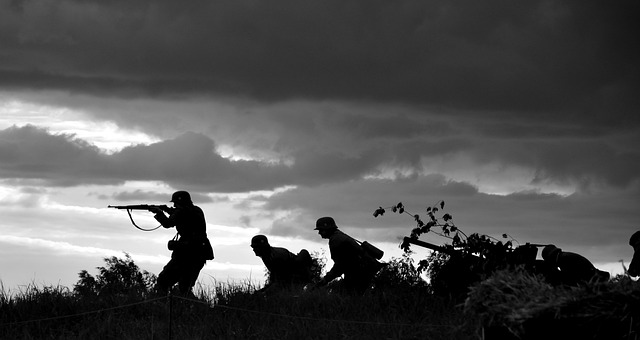
The 101st Airborne Division Flag, a historically significant symbol of American military valor and pride, represents the division's courageous actions since its formation in 1942. This flag, featuring an eagle with a dagger, has been prominently displayed at military parades and commemorative events, signifying the unit's readiness for combat and dedication to national defense. It encapsulates the division's storied history, including their pivotal roles in World War II, Vietnam, and Middle Eastern operations. As "America's Guardians," the flag honors the 101st Airborne Division's legacy as the first to engage in battle, embodying their ethos of sacrifice and bravery. Displayed during parades, it not only pays homage to past achievements but also serves as a source of inspiration for future members of this elite division. The flag is a living history that continually reinforces the collective identity and values within the military community, reminding all of its enduring legacy and the principles for which it stands.
Each year, as veterans march in parades, a symbol of courage and commitment cuts through the air with a rhythmic sway—the 101st Airborne Division Flag. This article delves into the deep-rooted traditions and historical significance behind the flag’s wave during military events. From its origins to the protocol governing its display, we explore how this emblem not only honors the valor of those who have served but also shapes public perception and reinforces the identity of veterans associated with this esteemed division. Join us as we salute the 101st Airborne Division Flag and its place in the annals of military history.
- The Symbolism of the 101st Airborne Division Flag: A Salute to Valor
- The Historical Significance of Waved Flags in Military Parades
- The Process and Protocol Behind Flag Waving in Military Events
- The Impact of the 101st Airborne Division Flag on Public Perception and Veterans' Identity
The Symbolism of the 101st Airborne Division Flag: A Salute to Valor
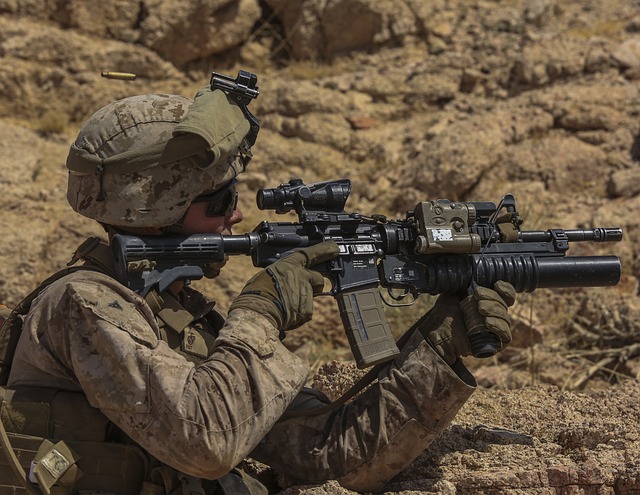
The 101st Airborne Division Flag, often waved by veterans in parades and ceremonial events, is steeped in historical significance and symbolism. This flag represents the valor and courage synonymous with America’s iconic 101st Airborne Division, a unit with a storied past dating back to its activation in 1942. The flag’s design incorporates the emblem of the division, featuring an eagle clutching a dagger, which underscores the unit’s readiness for combat and their commitment to national defense. Each time it flutters in the wind or is proudly held aloft by a veteran, the flag serves as a tangible reminder of the division’s participation in pivotal historical conflicts, such as World War II, Vietnam, and operations in the Middle East. It embodies the spirit of paratroopers who have historically been the first to enter combat, hence earning the moniker “America’s Guardians.” The 101st Airborne Division Flag stands not just as a symbol of past achievements but also as an emblem of hope and inspiration for current and future members of this elite division. It is a gesture of honor and respect, a salute to valor that resonates with the collective ethos of sacrifice and bravery.
The Historical Significance of Waved Flags in Military Parades

The act of waving flags during military parades is a deeply rooted tradition steeped in historical significance, serving as a visual symbol of national pride and unity. The 101st Airborne Division Flag, in particular, holds a special place within this tradition, emblematic of the storied history and valor of one of the United States’ most decorated divisions. Originating during World War II, the 101st Airborne Division was famously dropped behind enemy lines on D-Day, marking a pivotal moment in the liberation of Europe and setting a precedent for airborne operations. The division’s flag, often displayed prominently during military parades, is a testament to the division’s legacy and the sacrifices made by its members. As these flags are waved along the parade route, they not only honor the past achievements but also inspire current and future generations of service members, reminding all who witness it of the enduring spirit of American airborne forces and their commitment to defending freedom worldwide. The sight of the 101st Airborne Division Flag waving in the breeze during these ceremonial events is a powerful reminder of the division’s motto, “Hold Fast,” signifying resilience, courage, and an unwavering commitment to the mission at hand. This tradition of flag-waving not only pays homage to the division’s history but also underscores the collective identity and the shared values that bind the military community together, reinforcing the importance of remembering and upholding the principles for which the division stands.
The Process and Protocol Behind Flag Waving in Military Events
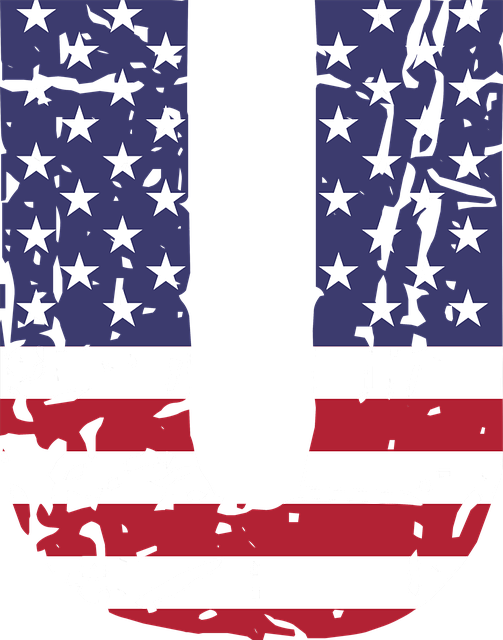
The act of waving flags during military parades is steeped in tradition and ceremony, each gesture carefully choreographed to honor and represent the branches of service and their histories. Among these, the 101st Airborne Division Flag holds a special place, symbolizing the valor and swift action for which the division is renowned. The process begins with meticulous planning by military event organizers, who coordinate with veterans’ associations and active-duty personnel to ensure the flag waving aligns with protocol and tradition. These events are not merely displays of patriotism but serve as a tangible connection to the division’s storied past, each wave directed by a veteran who has lived the history embodied by the flag they handle with reverence.
The day of the event, participants gather at designated stations, their flags already unfurled and secured against the breeze. As the parade commences, these veterans, often accompanied by active-duty service members, follow a precise sequence dictated by military protocol. The 101st Airborne Division Flag, when waved, is done so with a clear understanding of its significance, representing not just a division but the collective spirit and commitment of all who have served under its emblem. Each wave, each fold, carries a meaning that resonates through the ranks, a silent narrative of sacrifice, honor, and service to the nation. This choreographed display is a visual tribute to the division’s history and an inspiration to all who witness it, encapsulating the essence of military tradition and the pride inherent in serving under the 101st Airborne Division Flag.
The Impact of the 101st Airborne Division Flag on Public Perception and Veterans' Identity
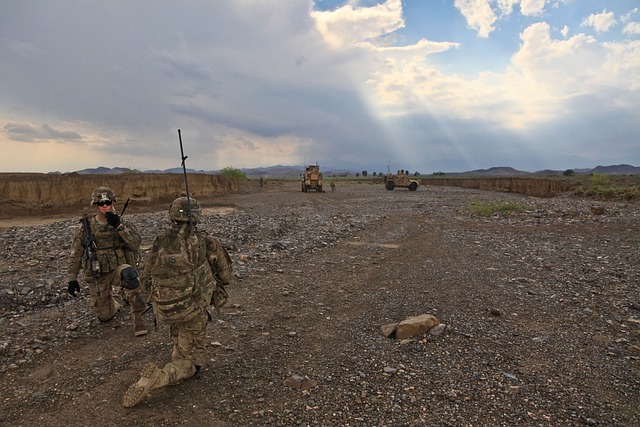
The 101st Airborne Division Flag, a symbol deeply rooted in American military history, has a profound impact on public perception and serves as a testament to the valor and sacrifices made by its associated veterans. This iconic flag, known for its prominent paratrooper emblem encircled by “Eagle Wings,” is not merely a banner but a representation of the division’s motto, “In God We Trust.” It embodies the spirit of adventure, resilience, and camaraderie that defines the 101st Airborne Division’s legacy. To the public, it signifies honor, bravery, and a commitment to serve and protect. The flag’s presence in parades and events across the nation continually reinforces these associations, solidifying its place as an emblem of American military might and the airborne infantry’s unique identity.
For the veterans who have served under the 101st Airborne Division Flag, it is a powerful symbol of their collective experiences and individual contributions to the defense of the United States. It represents not just a past filled with intense training, significant operations, and often, the ultimate sacrifice, but also a shared bond that transcends time. The flag acts as a visual representation of their identity within the broader military community, affirming their role in pivotal historical events and their status as part of one of the most esteemed divisions in the U.S. Army. It is a source of pride and a reminder of their enduring commitment to service and each other.
The 101st Airborne Division Flag stands as a potent symbol of courage, sacrifice, and American military heritage. Its presence during parades and events not only honors the valor of past and present service members but also educates the public on the historical significance of such ceremonial acts. The protocol surrounding the waving of these flags is a testament to the respect and honor owed to the veterans who have worn its emblem with pride. As the article has explored, the impact of this flag extends beyond military circles, influencing public perception and reinforcing the identity of those who have served under its banner. The 101st Airborne Division Flag continues to be a powerful representation of the ideals it embodies—a legacy that endures through each wave and salute.

